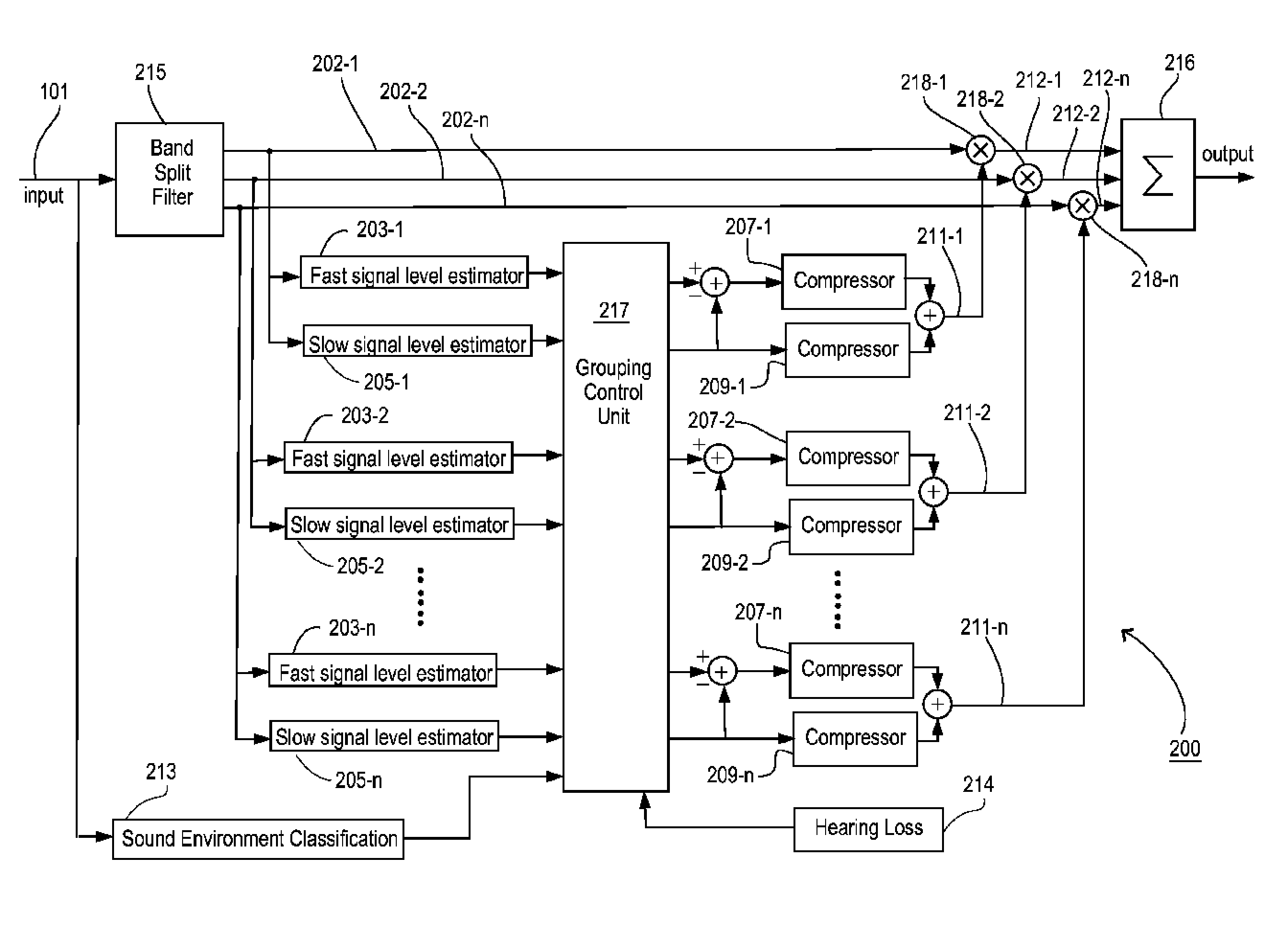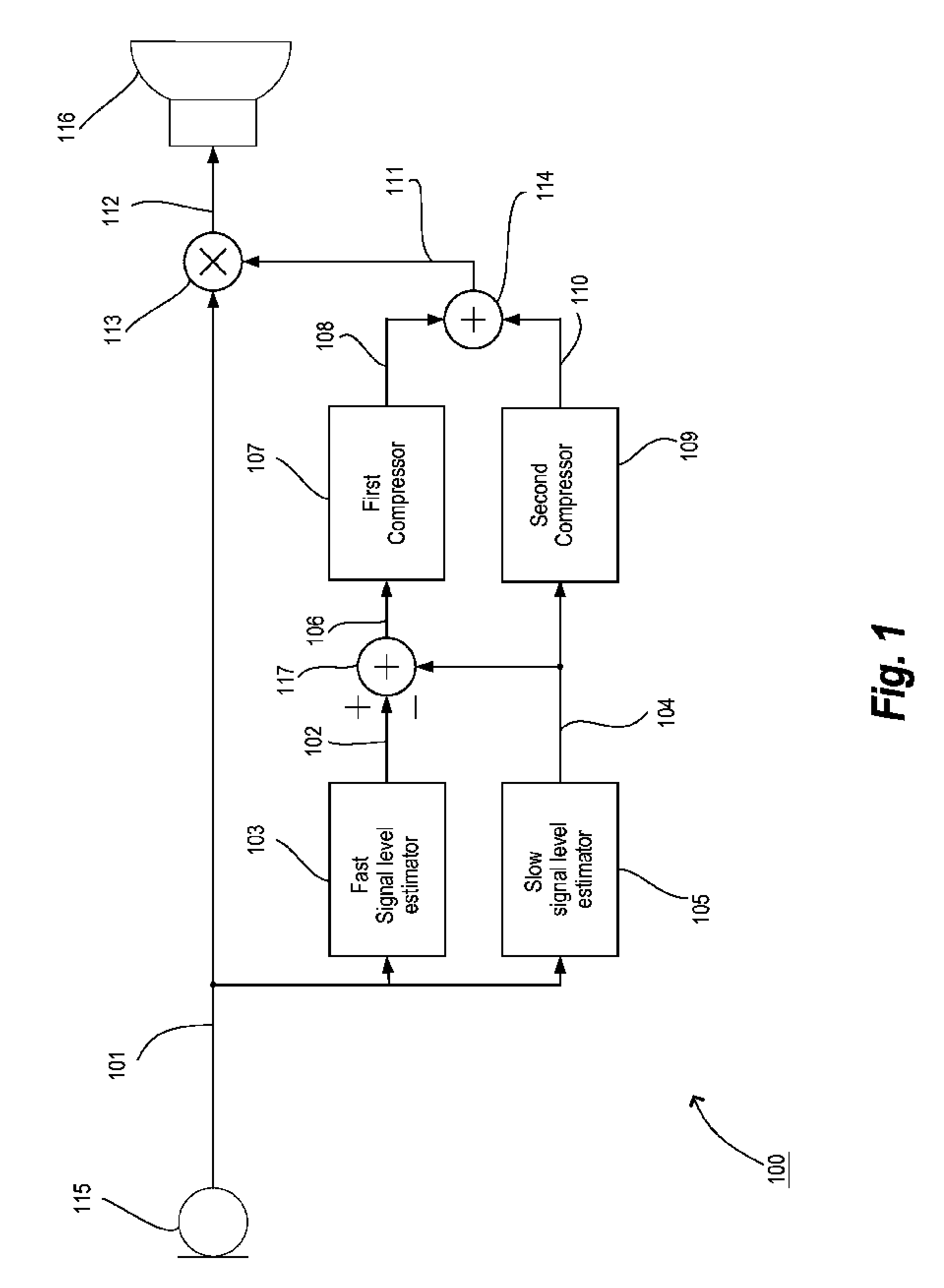Method for sound processing in a hearing aid and a hearing aid
a technology for hearing aids and hearing aids, applied in the field of hearing aids, can solve the problems of not being able to independently set compression, none of the systems described above allow the free adjustment of fast acting compression characteristics, etc., to achieve the effect of improving speech quality and gain control properties
- Summary
- Abstract
- Description
- Claims
- Application Information
AI Technical Summary
Benefits of technology
Problems solved by technology
Method used
Image
Examples
Embodiment Construction
[0046]FIG. 1 shows a highly schematic and simplified block diagram of a first embodiment of a hearing aid according to the present invention. The signal path of the hearing aid 100 comprises an input transducer or microphone 115 transforming an acoustic input signal into an electric input signal 101. This signal is split up into two branches, namely a gain branch, which is used to calculate the gain factor and a signal branch, which is used to carry the signal intended for having its level modified in the gain multiplier 113. The electric input signal in the gain branch is supplied to a first signal level estimator 103 and a second signal level estimator 105 that are adapted for responding according to a fast and slow speed respectively. The output from the signal level estimators is therefore a first estimated signal level 102 based on fast signal level estimation and a second estimated signal level 104 based on a slow signal level estimation.
[0047]Subsequently the second estimated...
PUM
 Login to View More
Login to View More Abstract
Description
Claims
Application Information
 Login to View More
Login to View More - R&D
- Intellectual Property
- Life Sciences
- Materials
- Tech Scout
- Unparalleled Data Quality
- Higher Quality Content
- 60% Fewer Hallucinations
Browse by: Latest US Patents, China's latest patents, Technical Efficacy Thesaurus, Application Domain, Technology Topic, Popular Technical Reports.
© 2025 PatSnap. All rights reserved.Legal|Privacy policy|Modern Slavery Act Transparency Statement|Sitemap|About US| Contact US: help@patsnap.com



